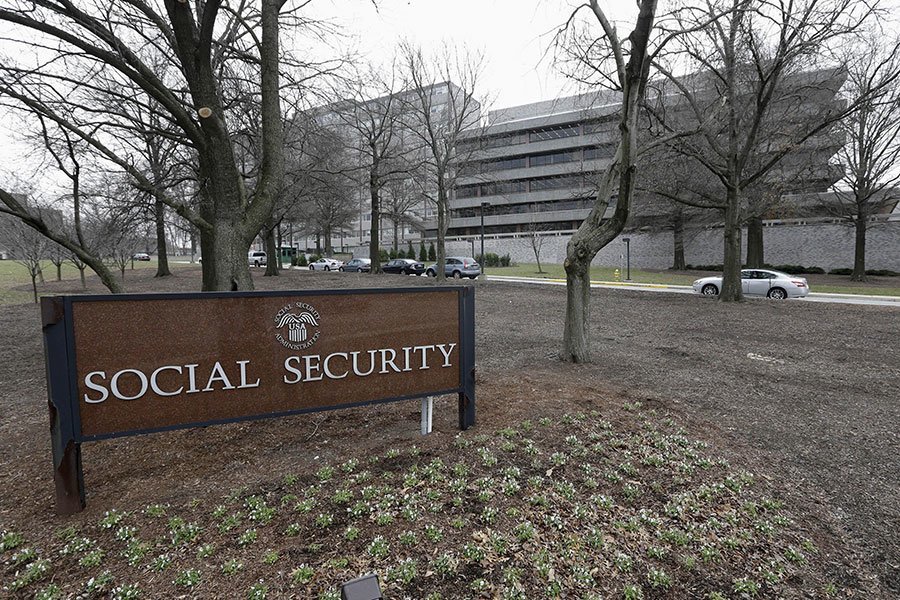
Studies Reveal Social Security Is In A Worse Financial State

Research Model
Social Security serves to insure the standards of living of U.S. workers, their dependents as well as their survivors against losses of wage caused by old age or disability. Studies have now shown that the medium and long-term condition of the Social Security has gradually gotten worse over time.
According to new research findings, the financial state of the Social Security Trust Fund has the probability of deteriorating even more rapidly than official projections previously indicated. The study was released on August 4, 2018, by researchers of the University of Pennsylvania.

According to new research studies, the financial state of the Social Security Trust Fund has the probability of deteriorating even more rapidly than official projections previously indicated
The research was conducted using the Penn Wharton Budget Model. To project the depletion date of the Social Security Trust fund, the researchers had to examine the inflows into the Social Security Trust Fund as well as the outflows from the trust fund that provided help to the Disability Insurance (DI) and Old Age and Survivors Insurance (OASI) programs.
They utilized the latest version of the PWBM Social Security Module to reach estimates on static as well as dynamic bases. In addition, the model adopted provided a detailed picture of the current population’s demographic compositor and also projects the changes for the future.
Research Predictions
According to the Penn researchers, there is the likelihood that the fund would be totally depleted by 2032 and not 2034 as the most recent report from the Official Social Security Trustee indicated. In essence, the projection of PWBM is that the financial condition of Social Security is considerably worse than the estimates of the Official Security Trustees. The estimates by the Official Social Security Trustees did not put into consideration the effect which future debt growth would have on reducing the growth of payroll tax base.
Accounting for the difference, the Penn group noted that the Trustees’ projection isn’t a full reflection of the effect of changing economic situations especially the increasing federal debt.
Analysts have noted that in the event of the Trump administration’ tax cuts and also the latest spending deals, the debt is projected to significantly grow as a GDP percentage. The authors of the research also explained that the increase in the national debt would lead to a reduction in the available resources to be used for private investment. They further stated that this would reduce the size of the wage base used for the financing of Official Social Security benefits.

The researchers noted that if the shortfalls evident in the Social Security keeps contributing to the unified deficits of the federal government and remains consistent in the absence of taxes or benefits changes, the ratio of the federal debt to GDP would go beyond 200% by 2048.
They also projected that if the shortfalls evident in the Social Security keeps contributing to the unified deficits of the federal government and remains consistent in the absence of taxes or benefits changes, the ratio of the federal debt to GDP would go beyond 200% by 2048. According to the researchers that path isn’t sustainable.
They further projected that upon the insolvency of the Trust fund, Social Security will still get funded through the payroll taxes. However, given the existing law, the taxes would only be sufficient to pay just about 80% of retirees promised benefits.
Other Research Reports
Another report issued on the same day by the Penn group indicates that seniors with lower income will face a higher risk if there is a cut in the benefits. The study showed that in 2012, retirees who fell within the lowest income bracket heavily depended on Social Security for nearly 90% of all their income. On the other hand, those who fell within the highest quartile only had approximately 10% income from Social Security benefits.

Another report indicates that seniors with lower income will face a higher risk if there is a cut in the benefits.
The study concluded that notwithstanding the increase in dependence on social security, there is still a worsening of the program’s finance over the years that after the reform in the early 1980s.
It is pertinent to note that the estimates of the Official Security Trustee did not take into account the major future macroeconomic variables such as the growing debt path of the nation. PWBM, on the other hand, used a model which put that into consideration and thus projects a depletion in 2032. In addition, the Penn researchers projected larger yearly cash-flow shortfalls for the future.
More in Business
-
`
Streaming Giant Netflix Faces Yet Another Challenge
In the ever-evolving landscape of streaming entertainment, Netflix, once the unchallenged king of digital content, now faces a complex puzzle beyond...
December 1, 2023 -
`
Signs You Should Quit Your Current Job & Move On
You Don’t Feel Comfortable at Work Imagine spending the majority of your waking hours in a place where you feel uneasy,...
November 20, 2023 -
`
How to Adjust and Renew Your Portfolio
Investing in the financial world is like navigating an ever-changing landscape—constantly evolving, always shifting. The key to staying on track? Regularly...
November 18, 2023 -
`
Dr. Dre’s Divorce With Nicole Young: A Closer Look
When the beats of old-school hip-hop start bumping, Dr. Dre’s name reverberates in fans’ minds worldwide. Born as Andre Young, this...
November 12, 2023 -
`
Why Branded Content Is the Best Way to Connect With Your Audience
Have you ever found yourself deep in a compelling article or engrossed in a video series, only to later discover that...
November 5, 2023 -
`
Why the Gender Pay Gap Could Be Getting Worse | New Research Findings
At a time when women are making significant strides in various professional arenas, a new report throws light on a trend...
October 28, 2023 -
`
What Is a Bull Market and How Can Investors Benefit From One?
In finance, the term “bull market” is frequently used to describe a period of optimism, rising asset prices, and investor confidence....
October 19, 2023 -
`
A-List Power Couples Where the Women Make More Money
In an era of shifting gender roles and evolving definitions of success, it’s increasingly common to find celebrity couples where the...
October 15, 2023 -
`
Massive Price Cuts: Tesla Only Witnesses ‘Modest’ Sales Gain in China
Cutting Down Prices, But Not Cutting the Mustard? Summer 2023 brought with it a promise of sunshine and relaxation. For Tesla...
October 8, 2023















You must be logged in to post a comment Login